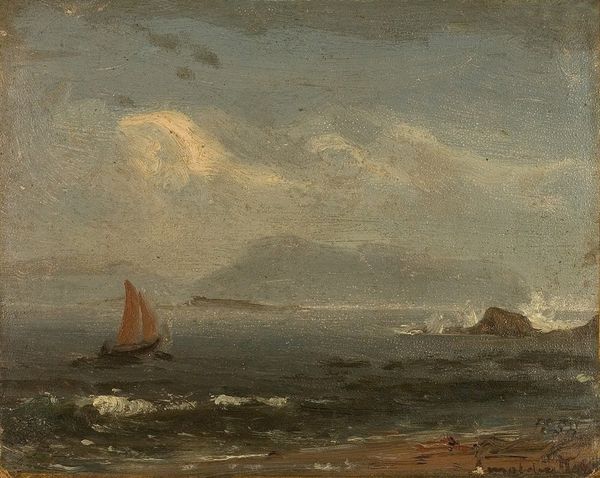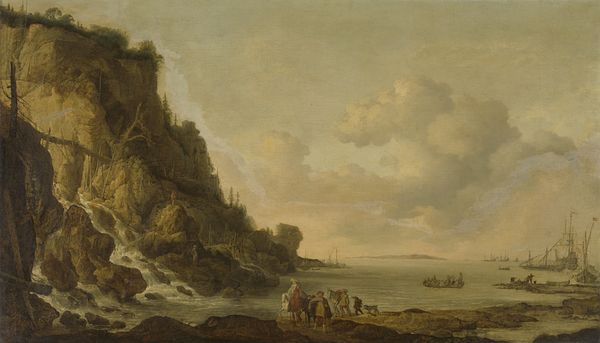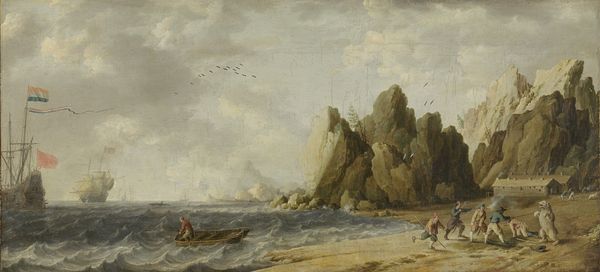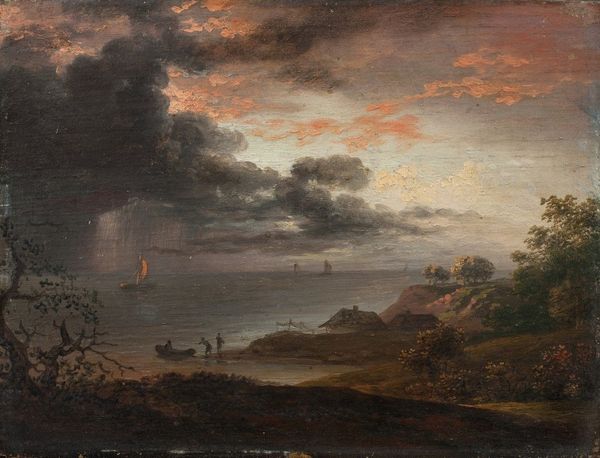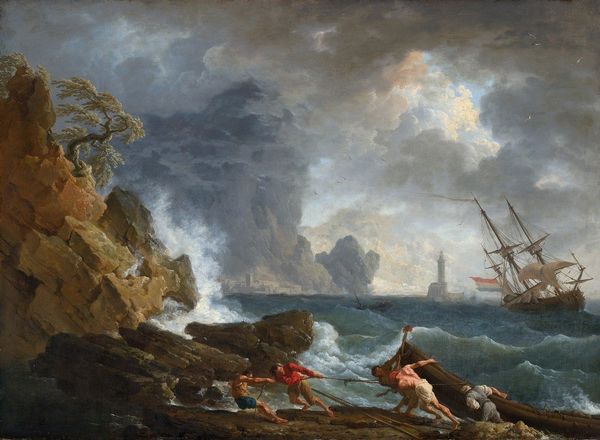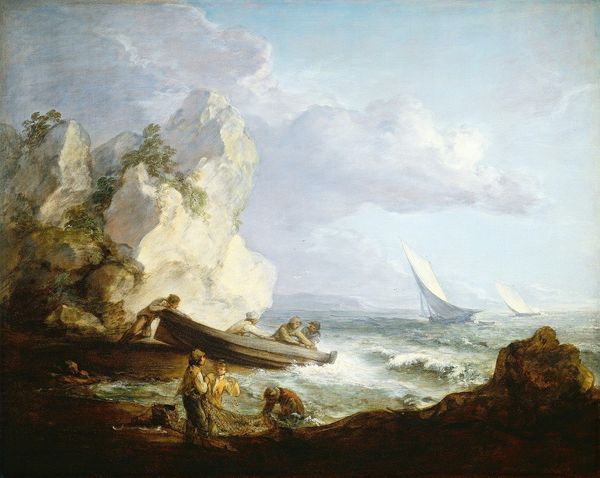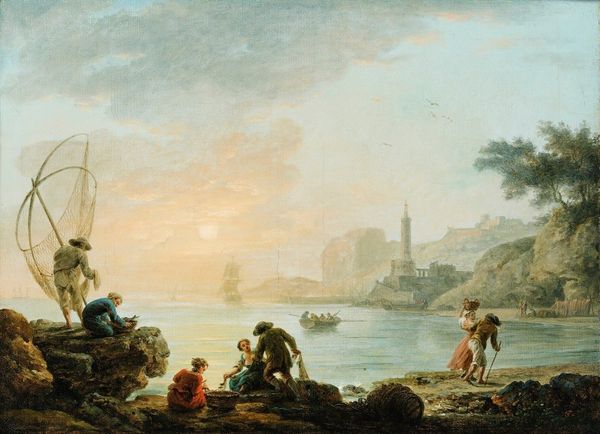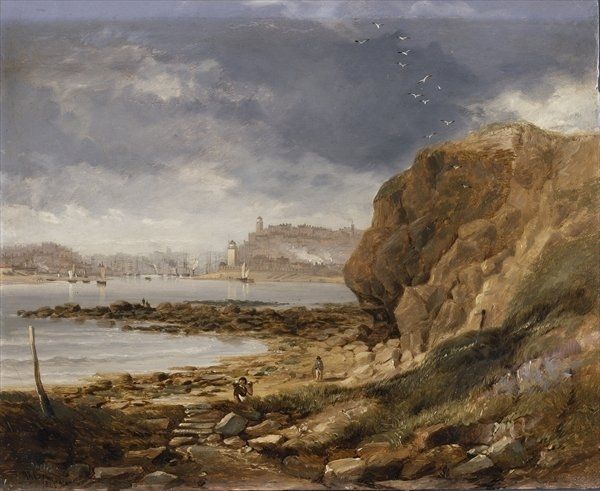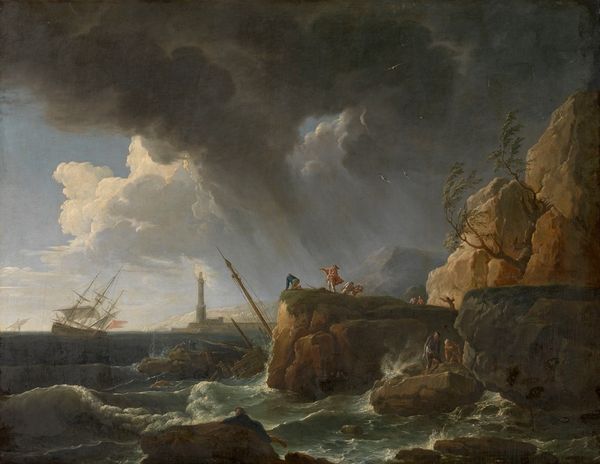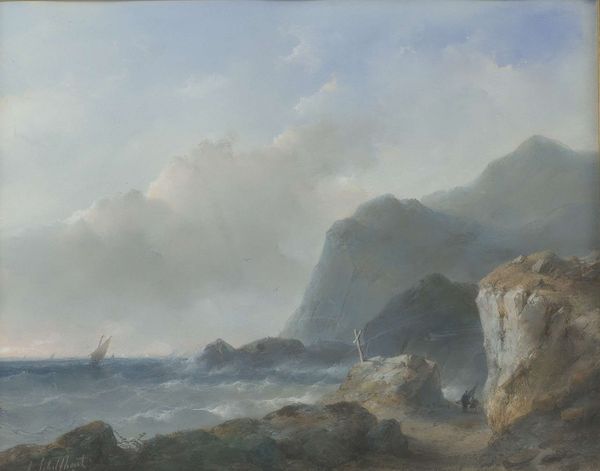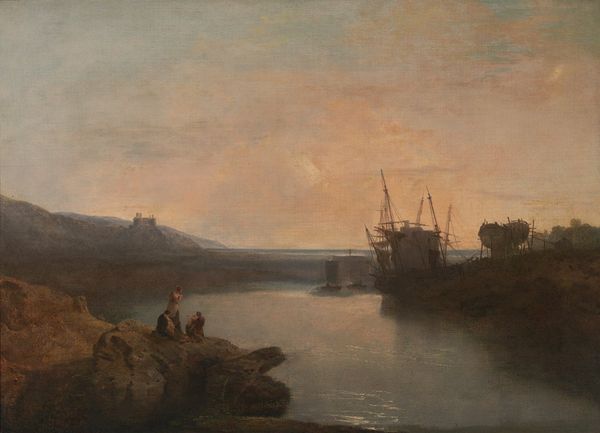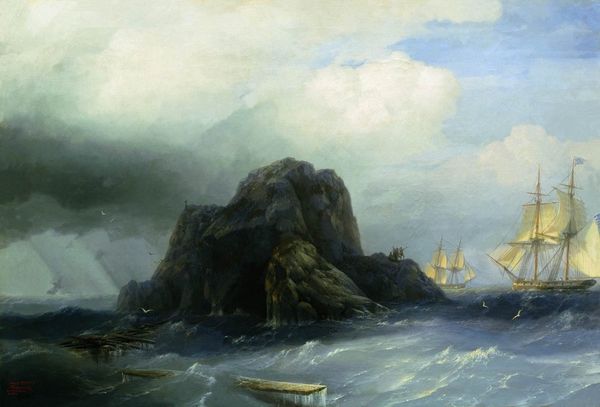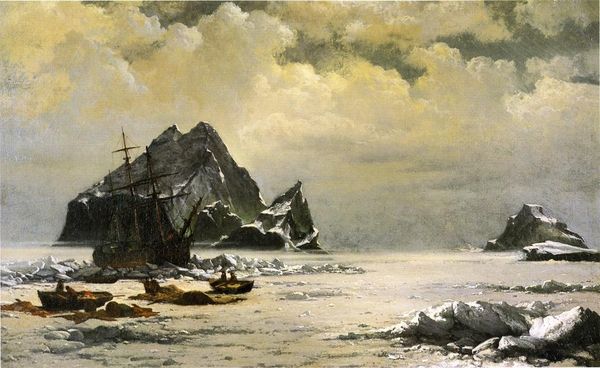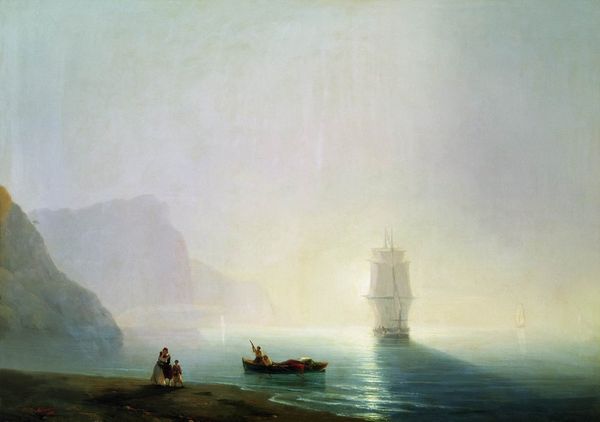
Dimensions: support: 190 x 254 mm
Copyright: CC-BY-NC-ND 4.0 DEED, Photo: Tate
Editor: This is Julius Caesar Ibbetson's "Sand Quarry at Alum Bay". It’s an oil on canvas showing the dramatic coastline. It feels almost… indifferent to the human figures. What do you see in it? Curator: I see a landscape pregnant with the tensions of its time. The picturesque often obscures the realities of labor and resource extraction. Who benefits from this quarry, and at what cost to the land and its people? Editor: So, beyond the pretty scene, you're asking us to consider the socioeconomic context? Curator: Precisely. Ibbetson gives us beauty, but let's question whose beauty, whose prosperity, is being foregrounded. It is an early call for environmental justice. Editor: That's a perspective I hadn't considered. It definitely adds a new layer to my understanding. Curator: Indeed. Art invites us to ask these critical questions.
Comments
tatebritain 7 months ago
⋮
http://www.tate.org.uk/art/artworks/ibbetson-sand-quarry-at-alum-bay-n02948
Join the conversation
Join millions of artists and users on Artera today and experience the ultimate creative platform.
tatebritain 7 months ago
⋮
Julius Caesar Ibbetson visited the Isle of Wight in 1791, which inspired him to paint many views of the coves and cliffs. This picture shows the local scenery at Alum Bay, with a group of men quarrying sand in the foreground. The famous Needles – a row of chalk stacks in the sea – are visible in the distance. This is probably one of the several coastal scenes of the Isle of Wight that Ibbetson exhibited at the Royal Academy between 1792 and 1796. Throughout his career, Ibbetson travelled widely, including to China and the island of Java in Indonesia (then a Dutch colony). Many of his landscape paintings were inspired by the places he visited. Gallery label, October 2023
